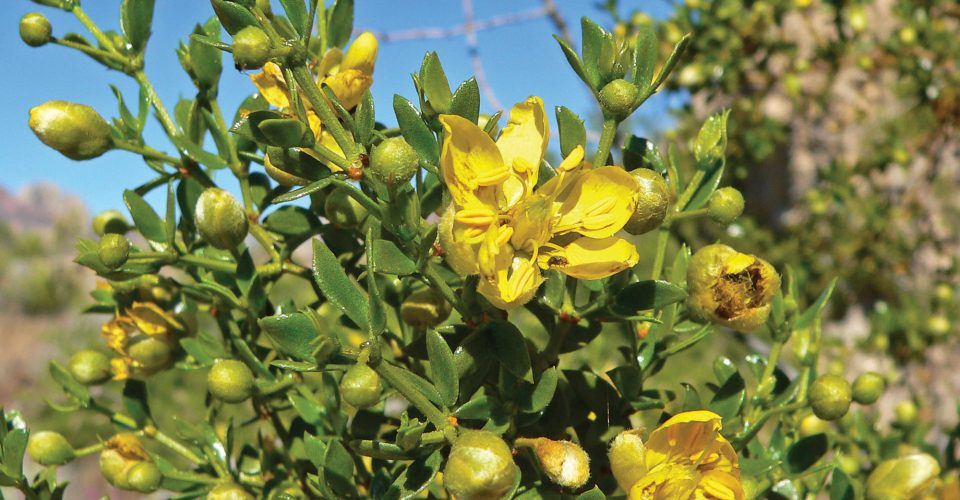Creosote Bush (Larrea tridentata)
Creosote bush is an evergreen shrub that can be found in the deserts of western Texas and throughout the southwestern deserts of the United States and Mexico. It grows on shallow soils that are underlaid with a hardpan (very dense soil).
- Does not usually grow taller than 5 or 6 feet but has been known to grow to 11 feet under the right conditions
- Is also known as greasewood
- Has small yellow flowers that will produce a small capsule-like fruit
- Will have small pointed yellowish to dark green leaves that are very sticky with a resin that produces a strongly scented aroma. The leaves are paired on the brown twigs that have conspicuous black nodes, giving the stems a jointed appearance.
- Older branches will have dark gray to black bark roughened by tiny scales.
Creosote bush is not utilized by cattle and can be poisonous to sheep. It can be used by certain small mammals and antelope.
Creosote bush has been used in the past for a few medicinal purposes. The leaves provided an extraction that was used as an antiseptic dressing for cuts and sores for domestic livestock and humans. It was also used to treat rheumatism. The plant was also used by early tribes as a dye for leather and making a gum that repaired broken pottery.
Creosote bush can become quite a problem on grazing lands because it sprouts profusely from the crown when the top growth is removed mechanically. It can be treated by a timely application of herbicide.
Editor’s note: Kent Ferguson, retired rangeland management specialist from USDA Natural Resources Conservation Service (NRCS), is providing us with plant identification photo stories to help ranchers identify those forbs, forages and species growing in the pastures. Additional photos provided by USDA NRCS.
Creosote Bush is excerpted from the February 2018 issue of The Cattleman magazine.



